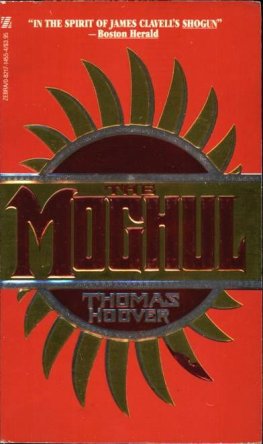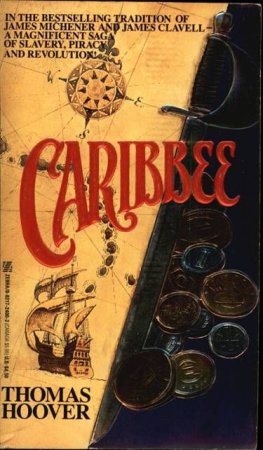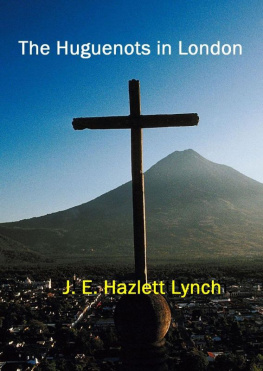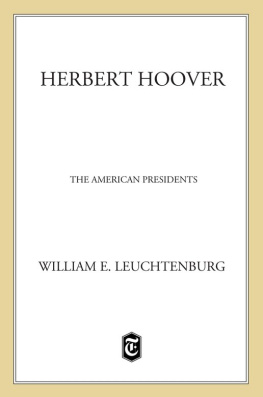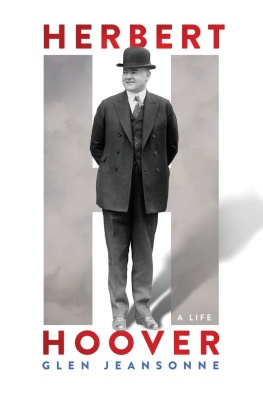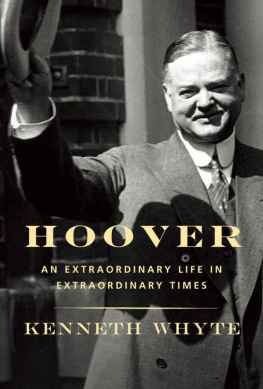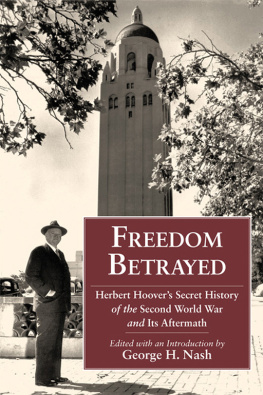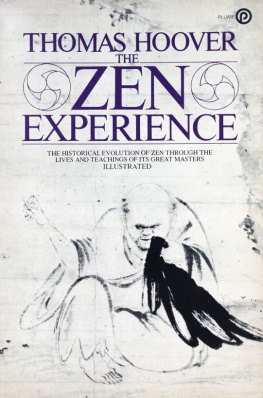THE POLITICAL SPECTRUM
THOMAS WINSLOW HAZLETT
The Political Spectrum
THE TUMULTUOUS LIBERATION OF WIRELESS TECHNOLOGY, FROM HERBERT HOOVER TO THE SMARTPHONE

Published with assistance from the foundation established in memory of Calvin Chapin of the Class of 1788, Yale College.
Copyright 2017 by Thomas Winslow Hazlett.
All rights reserved.
This book may not be reproduced, in whole or in part, including illustrations, in any form (beyond that copying permitted by Sections 107 and 108 of the U.S. Copyright Law and except by reviewers for the public press), without written permission from the publishers.
Yale University Press books may be purchased in quantity for educational, business, or promotional use. For information, please e-mail sales.press@yale.edu (U.S. office) or sales@yaleup.co.uk (U.K. office).
Set in Scala type by Integrated Publishing Solutions, Grand Rapids, Michigan.
Printed in the United States of America.
Library of Congress Control Number: 2016950652
ISBN 978-0-300-21050-7 (hardcover : alk. paper)
A catalogue record for this book is available from the British Library.
This paper meets the requirements of ANSI/NISO Z39.48-1992 (Permanence of Paper).
10 9 8 7 6 5 4 3 2 1
For my loving mother, Marilyn Kay Hazlett, 19261992,
and her joie de vivre.
And for my friend, Giancarlo Ibrgen, 19632016,
a remarkable visionary.
ACKNOWLEDGMENTS
THE AUTHOR STANDS ON THE SHOULDERS of giantsand hopes not to crush his mentors. These scholarly heroes include Ronald Coase, Harold Demsetz, Alfred Kahn, Leo Herzel, Armen Alchian, William Allen, and Harvey J. Levin. I have been exceedingly fortunate to speak with or formally interview many experts on subjects pertaining to this book, and gratefully acknowledge the grace, wisdom, and patience of Henry Geller, Brian Lamb, Sol Schildhause, Lionel van Deerlin, Henry Manne, Robert Hahn, Marty Cooper, Michael Marcus, Peter Huber, Pablo Spiller, Harold Furtchgott-Roth, Evan Kwerel, Jonathan Levy, Florence Setzer, John Williams, Richard Bennett, Lex Felker, Charla Rath, Janice Obuchowski, Gerald Faulhaber, Adam Clayton Powell III, Gregory Rosston, Greg Sidak, Robert Pepper, Michael Chartier, Thomas Welter, Dale Hatfield, Chris Sacca, Andrew Kreig, Glen O. Robinson, Marius Schwartz, Judith Mariscal, Jon Leibowitz, Jonas Wessel, Rune Ostgard, Ted Hearn, Gary Libecap, Karen Wrege, Brett Tarnutzer, Robert Corn-Revere, Chris DeMuth, Joan Marsh, Tom Whitehead, Blair Levin, Andrew McLaughlin, Dean Brenner, Hal Varian, Jim Snider, Frank Washington, Dorothy Robyn, Shane Greenstein, Charles Plott, Ted Frech, and Dennis Patrick.
Peter Pitsch read an early draft of this book and offered deep insights as well as practical suggestions, golden nuggets for a free-riding author. The guidance and encouragement of George Mason University Law School Dean Daniel Polsby, a remarkable man, were instrumental to my efforts, as was the Information Economy Project at George Mason University Law School. Clemson University has generously continued the Project and extended its support, for which I am indebted to Skip Sauer, recently chairman of the Department of Economics, and Robert McCormick, dean of the College of Business. James Montgomery, a bold editor at the Financial Times, created the New Technology Policy Forum in 2002; until 2011 it provided a lively space for me to spar with big thinkers Richard Epstein, Jamie Boyle, Eli Noam, and Lawrence Lessig, developing many of the ideas in this book. Thomas Donlan, an editor at Barrons who paid attention to tech policy before tech policy was cool, has also been supportive. Charlie Firestone has regularly invited me to Aspen Institute discussions of spectrum policy; I must commend Aspen for organizing such stimulating events and thank Charlie for so often including me. Dewayne Hendrickss dedication to a technology article e-list, and Ken Robinsons remarkable one-man show, the weekly Telecommunications Policy Review, have proven valuable educational tools for me, as well.
My academic coauthors have been a bountiful source of knowledge, and I have learned vast amounts from Arthur Havenner, Giancarlo Ibrgen, Dennis Weisman, Robert Crandall, Roberto Muoz, Diego Avanzini, Evan Leo, Babette Boliek, Scott Wallsten, George Bittlingmayer, David Teece, Len Waverman, Sarah Oh, Robert J. Michaels, Zhiqiang Leng, David Sosa, Coleman Bazelon, George Ford, Wayne Leighton, Brent Skorup, Bruno Viani, Drew Clark, Ralitza Grigorova, Michael Honig, and Joshua D. Wright. Vernon Smith and David Porter, academic collaborators par excellence, are particularly notable in this regard, as are their leadership and bountiful insights on projects conducted by our boutique consulting firm, Arlington Economics.
Individuals who helped me in the production of this manuscript include Laura Lieberman, Ryan Tacher, James Spurlock, Haobin Fan, Emily Wright, Cesar Castellon, Ben Schwall, Jonathan Earnest, and Lynn Evans. Special gratitude is owed to my intrepid friend and editor Martin Morse Wooster, and to Charles Jackson, whose excellent radio engineering tutorials I imperfectly absorbed. Teresa Hartnett, my agent, was a strong source of enthusiastic support. My hope is that some fraction of that vital input was justified. William Frucht is the ultimate professional, and I have been most fortunate to have him as my editor at Yale University Press. He offered invaluable editorial assistance reflecting his well-developed literary acumen and an impressive dedication to the understanding of history, economics, and public policy. He selected two anonymous referees for the initial manuscript, each of whom offered sage criticisms and suggestions. Bills assistant, Karen Olson, gave me guidance in organizing the manuscript and tracking down the illustration permissions, and manuscript editor Dan Heaton helped polish what I had hammered. The finished volume owes much to each of these contributions. All errors and omissions remain, sadly, the responsibility of the author.
It is customary to end such a list with a tribute to ones family for the great sacrifice they have made, while pleading for forgiveness for time spent writing. This tradition seems beside the point in the instant case. The fact of the matter is that my amazing wife, Alexandra, and our teenage daughters, Marilyn and Lauren, made certainthrough this project and all elsethat our best life continued to happen. I was unfamiliar with the country tune about a dad who spends time with his daughter, She Thinks Were Just Fishin. But my girls made sure I heard that music, and so much else. And now, ladies, its time to find where theyre biting.
THE POLITICAL SPECTRUM
Introduction: Magic and Cacophony
How easily are base and selfish measures masked by pretexts of public good and apparent efficacy.
James Madison
NO NATURAL RESOURCE IS LIKELY TO be more critical to human progress in the twenty-first century than radio spectrum. Invisible, odorless, and ubiquitous, it is the space through which electronic communications travel. We have been grappling with its possibilities for just over a century. While children today see wireless technology as a standard social amenity, only a short time ago it appeared as something of a magic trick. One description, commonly if erroneously attributed to Albert Einstein, was, The wireless telegraph is not difficult to understand. The ordinary telegraph is like a very long cat. You pull the tail in New York, and it meows in Los Angeles. The wireless is the same, only without the cat.
When television broadcasting debuted at the New York Worlds Fair in 1939, exhibitors created a special glass-encased TV set for the demonstration. It was an attempt to preempt any claims by skeptics that tiny performers were being squeezed onto a compact stage.
Next page

